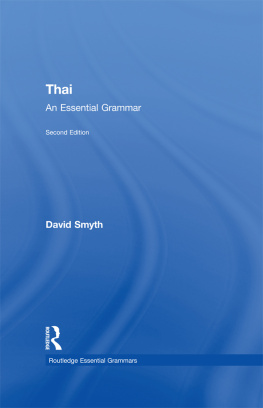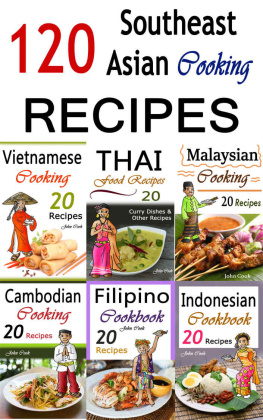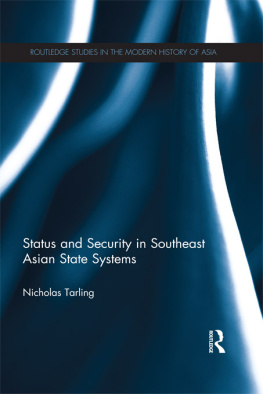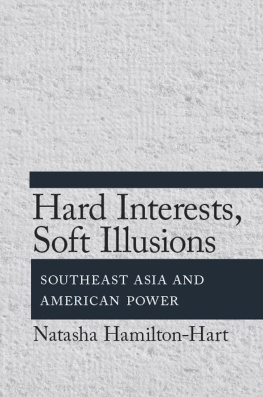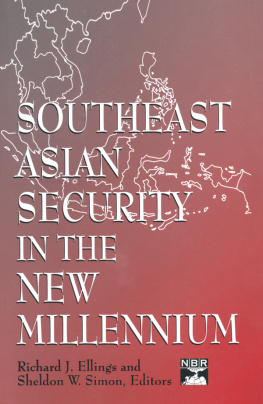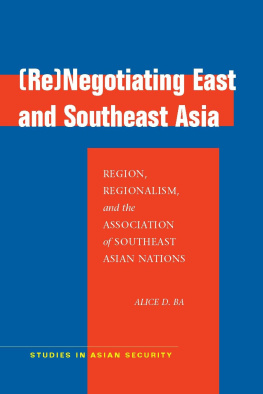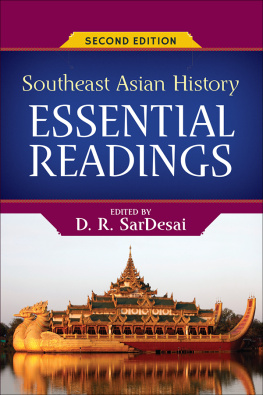First published by Curzon Press 2000
This edition published 2012 by Routledge
2 Park Square, Milton Park, Abingdon, Oxon OX14 4RN
711 Third Avenue, New York, NY 10017
Routledge is an imprint of the Taylor & Francis Group, an informa business
Editorial matter 2000 David Smyth
Designed and Typeset in Sabon by LaserScript Ltd, Mitcham, Surrey
All rights reserved. No part of this book may be reprinted or reproduced or utilized
in any form or by any electronic, mechanical, or other means, now known or
hereafter invented, including photocopying and recording, or in any information
storage or retrieval system, without permission in writing from the publishers.
British Library Cataloguing in Publication Data
A catalogue record for this book is available from the British Library.
Library of Congress Cataloguing in Publication Data
A catalogue record for this book has been requested
ISBN 0700710906
Contents
On 57 April 1995 the Centre of South East Asian Studies at the School of Oriental and African Studies, University of London hosted a workshop on The Canon in South East Asian Literatures. Generous funding by the European Science Foundation made it possible to bring together scholars from Indonesia, Malaysia, the Philippines, Thailand, Vietnam, Russia, Germany, USA, Czechoslavakia, Australia, Holland and England. Papers presented at the workshop covered various aspects of the literatures of Burma, Indonesia, Laos, Malaysia, the Philippines, Thailand and Vietnam; George Chigas was subsequently invited to contribute a paper on Cambodian literature to this volume.
Traditionally the literary canon is seen as a chronological arrangement of famous authors and major works which have stood the test of time because of their intrinsic merits and which are linked over the centuries by a presumed cultural unity. In recent years such a view has come under attack by critics who argue that the traditional canon is essentially a social construct which, in its exclusions of certain minorities, reflects power relations rather than aesthetic values. It was this tension which we hoped to reflect in the workshop, despite the uneven development of the study of the national literatures of South East Asia.
While the term canon is most widely understood to refer to an institutionally recognised list of exemplary works, such as the body of works constituting the national literature of a country, it is also used to denote a system of rules for creating such works. Both usages of the term are reflected among the papers in this volume.
The sixteen papers in this volume vary considerably in focus. They cover both contemporary and traditional literature and range from broad comparative studies and surveys of trends in a national literature to highly specific discussions of the role of an individual in shaping a canon or the place of a particular text within a tradition. Among the themes addressed are literary historiography, literary criticism, the reception of prose fiction, colonialism and Western influence, literary debate, censorship, literary prizes and state involvement, literary studies and the education system, gender issues and indigenous aesthetics.
Professor Phan Cu De (University of Hanoi) and Professor Budi Darma (IKIP Surabaya) also presented papers at the workshop which have been published elsewhere, while Nigel Phillips, Manas Chitakasem, Henry Ginsburg, Rachel Harrison and Nguyen Thi Thanh Binh acted as commentators; we are grateful to all of them for their contributions.
We would also like to sincerely thank Ian Brown, Chairman of the Centre of South East Asian Studies, and Mrs Irene Cummings for their unfailing efficiency in taking care of all the administrative arrangements and ensuring that the workshop ran smoothly. Finally, our deep gratitude is due to the European Science Foundation, without whose funding this workshop would not have taken place
David Smyth
Anna Allott was formerly Lecturer in Burmese at the School of Oriental and African Studies, University of London.
Bernard Arps is Professor of Javanese at the University of Leiden.
Vladimir Braginsky is Professor of the Languages and Literatures of South East Asia at the School of Oriental and African Studies, University of London.
Christine Campbell is a PhD candidate at The Australian National University, Canberra, Australia, working on modern Malay women writers.
George Chigas is a PhD candidate at the School of Oriental and African Studies, University of London, working on Cambodian literature.
Anne-Marie Esche is Professor of Burmese at Humboldt University, Berlin.
Dana Healy is Lecturer in Vietnamese at the School of Oriental and African Studies, University of London.
Peter Koret is Lecturer in Southeast Asian Studies at the University of Arizona.
E. Ulrich Kratz is Reader in Indonesian at the School of Oriental and African Studies, University of London.
Lisbeth Littrup is Lecturer in Malay and Indonesian at the Department of Asian Studies, University of Copenhagen.
Ruth Mabanglo is an assistant professor of Tagalog at the Department of Indo-Pacific Languages, University of Hawaii.
Luisa J. Mallari is an assistant professor at the Department of English and Comparative Literature, University of the Philippines.
Prof. Yuriy M. Osipov is Professor of South-East Asian Literature at St. Petersburg University, St. Petersburg.
Muhammad Haji Salleh is Professor of Malay at the Universiti Kebangsaan Malaysia.
David Smyth is Lecturer in Tai and Cambodian at the School of Oriental and African Studies, University of London.
Ungku Maimunah Mohd. Tahir is Professor of Malay at the Department of Malay Letters, National University of Malaysia.
For many centuries the religious literature of Buddhism had a strong influence upon the architecture, sculpture, mural painting, folklore and written culture in the ancient and medieval kingdoms of Indochina. Buddhist hagiography as a significant genre of the Pali sacred scriptures played an important role in the development of the national epic traditions in classical poetry, prose, drama, in forming the canon of Myanmar (Burmese), Khmer, Lao, Mon and Siamese (Thai) literatures.
A special function belonged here to the jataka, a didactic story describing the Boddhisattas (the future Buddha) rebirths. According to the doctrine in the Pali Canon of the Buddhists such a story was a kind of a biography of the Great Being who had lived many lives and afterwards was finally born as Siddhattha Gotama to become, in that last earthly incarnation, Buddha or the Fully Awakened One. Most of these biographies were kept in a famous collection called The Jatakas or Book of Birth Stories, a part of the Khuddaka-nikaya (The Collection of Short Sermons), one book of the sacred canon the Tipitaka (Three Baskets) in Pali. A lot of the Boddhisattas life-stories we can also find in other parts of the Tipitaka and in quite a few non-canonical Pali texts, such as a well-known Buddhist apocrypha, the Pannyasa Jatakani (Fifty Jatakas).
In ancient and medieval Myanmar (Burma), Cambodia, Laos, and Siam all the above-mentioned hagiographical collections were not only the source of popular plots, but also the ideal model of literary style for native Buddhist writers and monastic preachers. Very popular in the Buddhist countries of Indochina, the canonical



